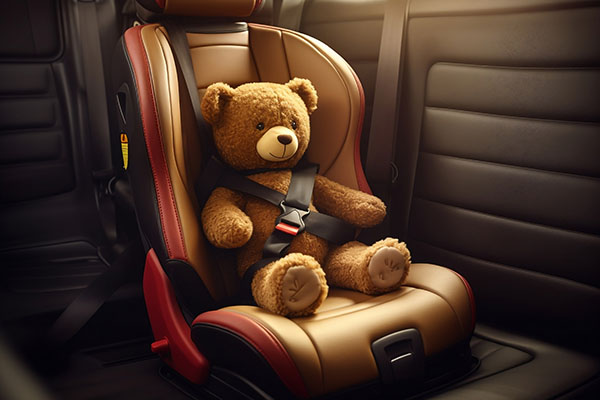
There's no greater responsibility for a parent or guardian than ensuring the safety of their precious little passenger. One essential tool in your safety arsenal is a properly installed child car seat. And now the question arises - "How do I install a kid car seat?" While it might seem complicated, there are a few steps you can follow to ensure proper and safe results.
1. Choose the Right Seat
Before diving into installation, ensure you have the right car seat for your child's age, weight, and height. Car seats come in various stages, from rear-facing for infants to booster seats for older children. Select the one that fits your child's stage and your vehicle.
How to choose the right car seat:
- Try car seats in your car before buying.
- Check if your car has Isofix connectors.
- Ensure the car seat fits in other cars if needed.
- Some manufacturers provide online guides for compatibility.
- Choose a seat based on your child's height and weight.
- Avoid secondhand seats due to safety concerns.
- If accepting one from friends/family, ensure its history and instructions are known.
- Consider how you'll use the seat (e.g., frequent lifting).
2. Read the Manual
Think of the car seat manual as your treasure map. Every seat is different, so reading the manufacturer's instructions is crucial. It will provide specific guidelines on installation and usage.
3. Location Matters
Where you place the car seat in your vehicle is crucial. Rear-facing seats should be in the back seat, and they should never be installed in front of an active airbag.
4. Position the Seat
For rear-facing seats, the angle is vital. The seat should recline at an angle specified by the manufacturer. This angle provides optimal protection and comfort for your child.
5. Install Tightly
Achieving a snug fit is paramount. To check if the seat is secure enough, give it a firm tug at the base. If it moves more than an inch in any direction, it's not tight enough.
6. Harness Your Child
Buckle your child into the seat according to the manufacturer's instructions. Ensure the harness straps lie flat with no twists and that they're snug but not too tight. You should be able to fit only one finger between the harness and your child's chest.
7. Chest Clip Placement
The chest clip should be at the armpit level. This keeps the harness straps correctly positioned over your child's shoulders.
8. Test for Tautness
Once your child is secured, test the harness by trying to pinch the webbing near the child's shoulder. If you can pinch it, the harness is too loose.
9. Booster Seats for Older Children
As your child grows, transition to a booster seat when they outgrow their forward-facing seat. The booster elevates them to the correct height, ensuring the seat belt fits properly.
10. Regular Checks
Car seat installation is not a "set it and forget it" task. Regularly check the seat's installation and your child's fit, especially after any car maintenance or changes in the car's interior.
Installed the car seat but having issues with your car? Cooper's Automotive is here to help out - contact us or book an appointment through our site!